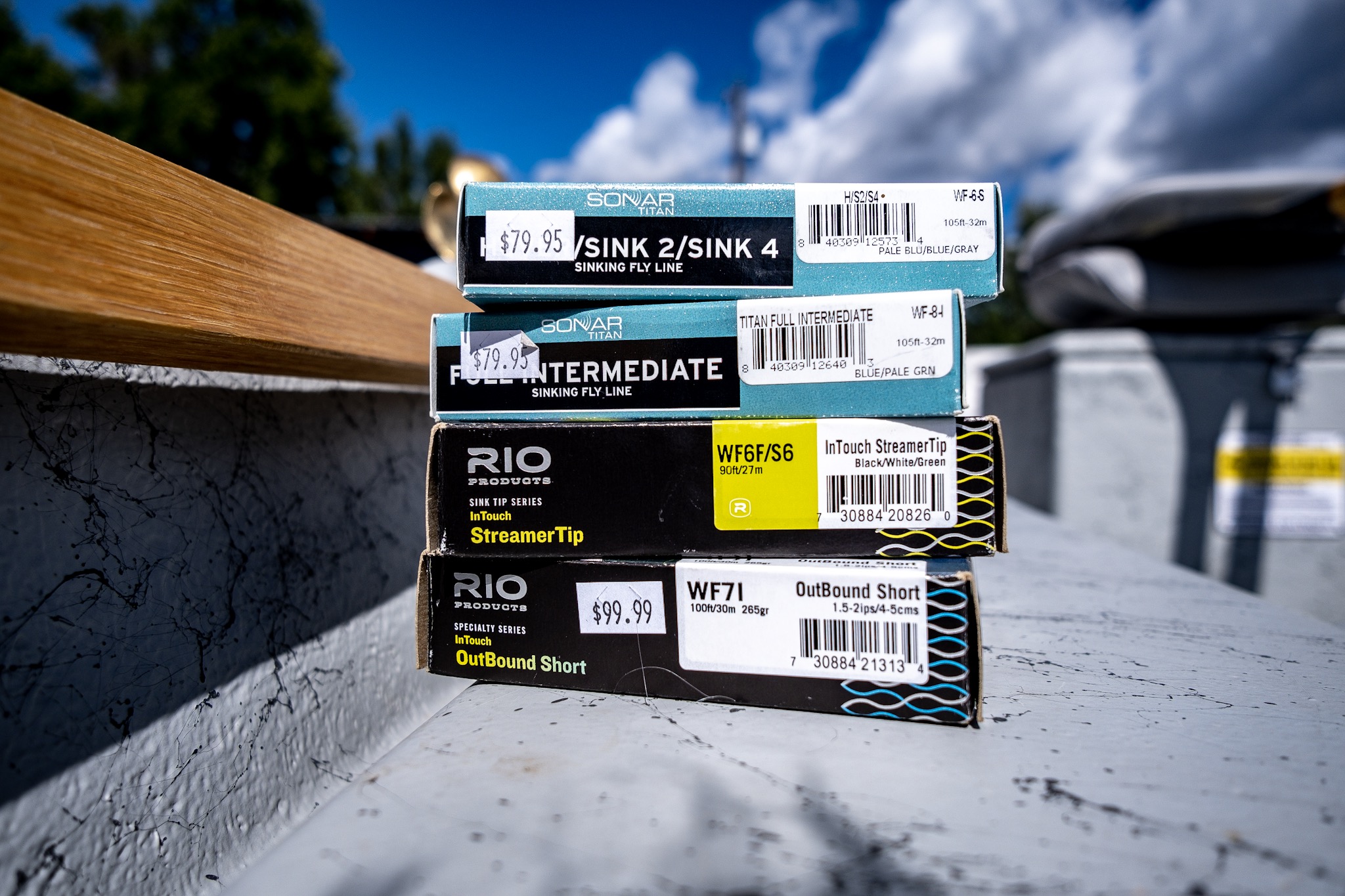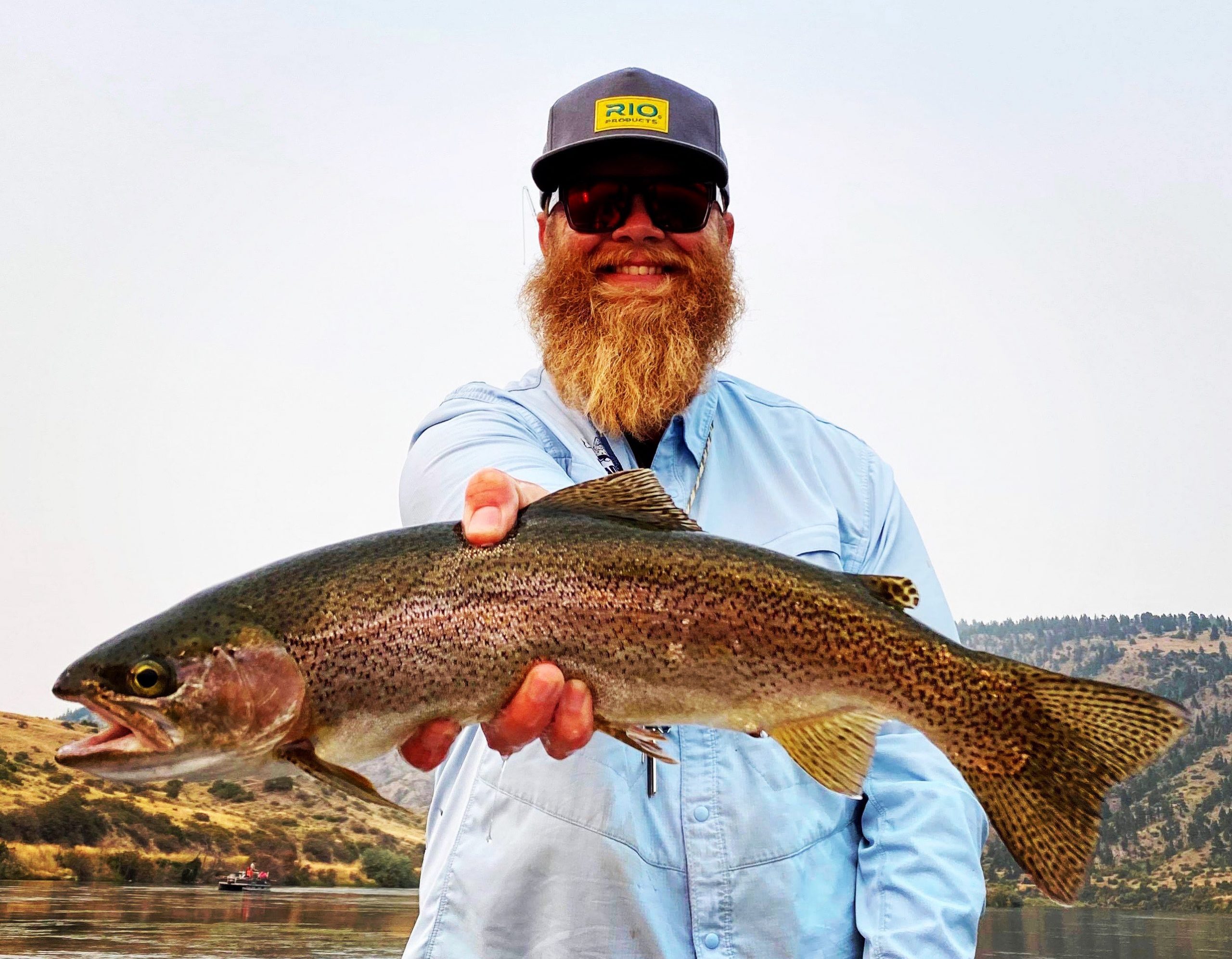Cuz you don’t have to. But most hardcore streamer anglers I know not only have a streamer specific line, but a whole outfit. Generally a 6 or 7 weight, and occasianally an 8. If they wade fish a lot with streamers, they often use a longer 9’6” or 10” rod. But that’s getting replaced by the trout spey outfit for many.
Back to the lines. Every river is different, so I’m talking about what we use here on the Missouri. Your river may differ.
With autumn streamer season approaching, we’re talking about gear for fall. The water is generally at it lowest and clearest of the year. So battling currents to get that fly down in the water column is not an issue. The fish can be spooky, having been molested daily for 7 months by now. So we often need to land our streamers quietly.
FLOATING LINES
You can certainly use your floating line, and there are strong arguments for using a floater in the fall. The primary advantage is that a floating line will (can might be a better term) land quieter than a sink tip. If you’ve ever tossed a heavy sink tip onto a shallow flat in the late fall, and watched a dozen fish wake away from the “splashdown”, you understand what I’m talking about. Floating lines can eliminate that due to the fatter and lighter construction. It also easier to tone down or “lay off” on a cast with a floating line. Especially important when extra delicacy is required. Here’s a few of our favorite floating lines for streamer fishing.
- RIO Outbound Short Floating
- Scientific Anglers Amplitude MPX
- RIO Big Nasty
But a big, weighted streamer can do just as much damage in skinny water, regardless of fly line choice. In slow, shallow water scenarios, an unweighted fly is often a much better choice. You can often land unweighted bunny-strip streamers very close to fish without spooking them. This is generally going to be a boat fishing scenario, but wade fishers can run into this situation as well.
But unweighted flies – particularly those tied with bunny and marabou – can be a pain to get under the surface. And when you do, they tend to swim right at the surface. Often you want to get them down a bit more. That’s why we often use…
INTERMEDIATE LINES
Probably the most commonly used autumn streamer line on the Missouri, intermediate lines hit the sweet spot for most. They land quiet enough, and they sink deep enough. Most are clear or translucent, offering a good degree of camouflage.
We’ve used intermediate tip lines for years at Headhunters. They have always been the most productive, enabling us to fish flats that are less than a foot deep, while still helping get our fly to the right depth on those fast 3-4 foot deep banks.
Recently we’ve been using full intermediate lines instead of tips. They fish much the same, but get a little deeper when we want them to, and the slick finish casts a little easier. They also are far more durable than floating coatings. Especially when we’re constantly retrieving line and stepping all over it in the boat.
If you’re setting up your first dedicated streamer outfit, it’s hard not to recommend an intermediate line. It does so many things well, and while it’s perfect for the fall, it can be an excellent choice in the spring as well, depending on water conditions. The colder, dirtier and higher the river gets, the deeper we want our fly. Our favorite intermediate lines.
- Scientific Anglers Sonar Full Intermediate
- RIO Outbound Short Intermediate Tip
The RIO Outbound series are essentially integrated shooting heads, heavily overweighted. They make great, first quick shots and will push very big flies. They are not as smooth or quiet as a traditional line. If you prefer more of a traditional or old-school taper, you’ll probably prefer the Sonar series from Scientific Anglers. These are very easy casting lines, and they tend to fish a little deeper. If I was setting up a wade fishing outfit I would choose this line.
SINK TIP LINES
It’s pretty rare that we use deep sink tips in the fall, at least when we’re fishing from the boat. But there are a few scenarios that we do. If we’re fishing deeper rip-rap banks in the Canyon, we definitely like to get deep on those steep drop offs. And while you generally think of throwing streamers at the bank from the boat, its not uncommon for us to be fishing faster and deeper “Center River” water with streamers in the fall. For this we love a moderate 10’ sink tip in the type 4 range.
The biggest hang-up with heavy tips is that you “hang-up”! Nothing is worse than having too much line for the depths you are fishing. A mend and a pause can get a shallow rig deeper, but not much can slow down a 7ips sink tip. So make sure you understand what kind of water you’ll be focusing your efforts on.
When we do fish a heavier tip in the fall, these are the lines we tend to use.
- Scientific Anglers Sonar I/3/5
- RIO Streamertip Float/Sink 6
The lesson here is make sure and adapt your streamer specific line to the water you’ll be fishing this fall. The Missouri or Lower Madison? An intermediate will probably work best. But for lake run fish around West, I’d probably choose a heavier sink tip. And, if I was wade fishing a pen un-named meadow stream, I’d go with a floater and a weighted fly.





1 Comment.
Good Stuff. My 7100 VXP’s reel is spooled with the AirFlo 6wt. BEACH – 33′ int. head integrated to a floating runner. It’s a “+” sizer & loads the Moderate/fast VXP just fine . . . I’ve added 5ft. tips as well with success.
I like it so much I’ve added the (new) 5wt. BEACH for the MOD 6wt. (have not used it yet – maybe I’ll bring it along to the Trout Spey Clinic.(?)
Now for the “Clinic,” & my ‘Newbie-ONE’ Trout Spey (3wt) I’ve chosen 2 AirFlo lines – Currently spooled is the Integrated SWITCH FLOAT 210 gr. and the Same Line in the 240 gr. will be along for testing too! Each has a 26ft. Head. with 14.5ft. front taper ( Scandi-ish!). I don’t anticipate “issues” with moderately fast sink tips – 5′, 8′ or 10′.(?) Switching lines will be a “piece of cake” as all my reels backing is finished with LARGE Loops for quick changes!
Hope your Fall Streamer Bins are full with new & innovative designed “flies,” I’m always in the market for more flies !